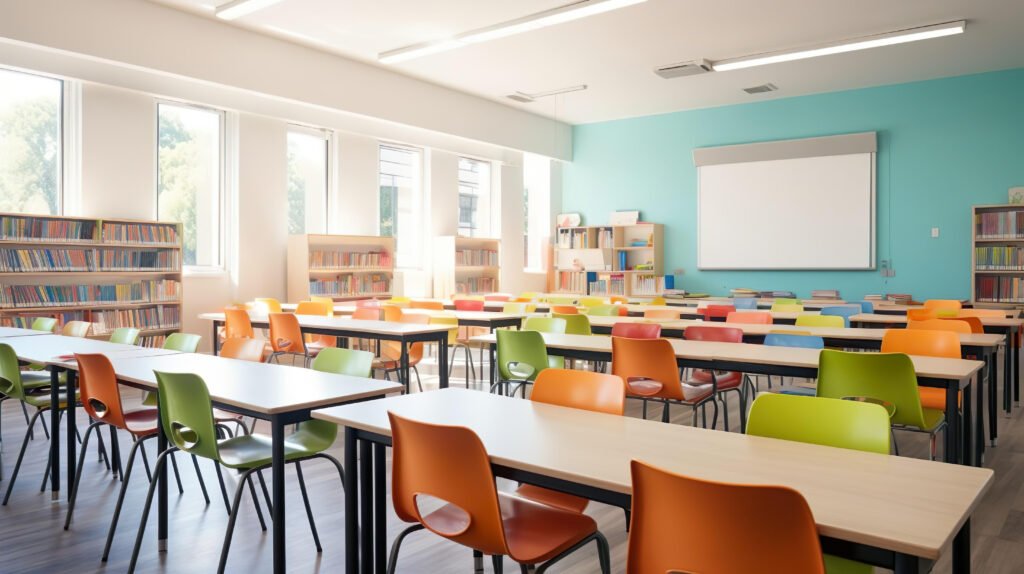A well-organized and thoughtfully designed classroom plays a crucial role in
enhancing student learning, engagement, and overall academic performance.
Beyond the curriculum and teaching methods, the physical environment, particularly
the furniture, significantly impacts how students interact with their lessons and each
other. Functional, comfortable, and adaptable furniture can support various teaching
styles and learning needs. Here are the essential pieces of classroom furniture that
contribute to a productive and functional learning space.
Student Desks and Chairs
At the heart of any classroom are student desks and chairs. These should be
ergonomic, adjustable, and appropriately sized to accommodate the age and size of
the students. Modern classrooms often lean towards flexible seating arrangements,
such as individual desks that can be easily moved into clusters for group work or
spaced out for independent study. Chairs with proper lumbar support and lightweight
materials help maintain posture and allow for quick reconfiguration of the classroom
layout.
Teacher’s Desk and Chair
The teacher’s desk serves as the command center for instruction, organization, and
communication. It should offer ample workspace, storage for lesson materials, and a
comfortable, supportive chair. While some modern classrooms promote a mobile
teaching style, having a designated desk gives teachers a reliable space for planning,
assessment, and one-on-one student interaction.
Storage Solutions
This is essential for maintaining an organized and clutter-free environment. Cabinets,
cubbies, bookshelves, and mobile storage carts help keep learning materials,
supplies, and student belongings in order. Open storage encourages student
independence, as children can access and return materials themselves. For
teachers, lockable storage units are useful for safeguarding sensitive materials and
technology.
Whiteboards and Bulletin Boards
Instructional boards are vital for displaying information, showcasing student work,
and reinforcing key concepts. Whiteboards are used for daily lessons, brainstorming,
and interactive activities, while bulletin boards can highlight student achievements,
educational posters, and classroom rules. Mobile whiteboards offer flexibility and can
double as space dividers or temporary display areas.
Collaborative Work Tables
With group work being a central component of many modern teaching strategies,
large, shared tables tend to be essential since they encourage collaboration,
communication, and teamwork among students. These tables come in various
shapes, including round, hexagonal, and rectangular, to suit different group sizes and
classroom layouts. Many schools now opt for modular tables that can be arranged in
multiple configurations to support diverse learning activities.
Technology Stations
As digital tools become integral to education, classrooms must include furniture that
accommodates technology use. This includes computer desks, charging stations,
and furniture with built-in cable management to keep devices organized and
accessible. Technology stations support blended learning environments, where
students use laptops or tablets alongside traditional materials.
Reading Nooks and Soft Seating
To promote literacy and provide a quiet space for reflection, many classrooms
incorporate cozy reading corners. These areas may include bean bags, small
couches, or floor cushions paired with low bookshelves. Soft seating encourages a
relaxed and welcoming environment, which is especially beneficial in early education
settings and inclusive classrooms.
Teacher Storage and Filing Units
Besides daily instructional needs, teachers require space to store records,
gradebooks, lesson plans, and instructional aids. Lockable filing cabinets and
personal storage units help teachers stay organized and ensure that sensitive
information is secure.
Yes, the right classroom furniture goes beyond basic utility. It fosters a dynamic,
comfortable, and engaging learning environment. As schools evolve to meet diverse
educational needs, flexible and ergonomic furniture is more important than ever. By
investing in high-quality, purposeful furniture, educators can create spaces that
promote academic excellence.

